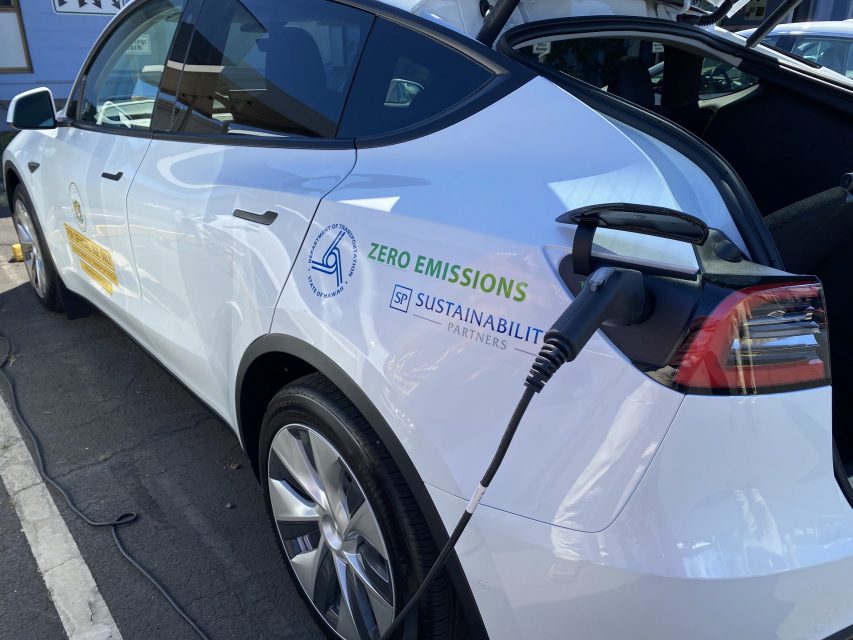
By Alfred Acenas
EBC Hawaii-Pacific Bureau
HONOLULU (Eagle News) – The first of nine electric vehicles (EVs) to serve as replacements was delivered on Tuesday, April 13, to the Hawaii Department of Transportation (HDOT), making this a step forward in the state government’s electrification of its light-duty fleet.
The EVs are part of a service contract that allows HDOT and other interested state and county agencies to procure them, along with the charging infrastructure, on a per-mile cost basis. The use of this service contract is expected to save the Hawaii approximately 75% in vehicle maintenance over the lifespan of the vehicle and an average of $287 per vehicle per year in fuel costs.
HDOT currently projects to replace an additional 34 internal combustion engine vehicles with EVs by the end of May.
HDOT will also continue to pursue electrification or elimination of its light-duty fleet of 300 vehicles within the next seven years.
“We were definitely excited to begin the service contract with Sustainability Partners as converting our aging vehicles to EVs is another way HDOT is saving money and working towards the state’s goal of reducing fuel consumption in ground transportation 70 percent by 2030,” said Hawaii Department of Transportation Deputy Director for Highways Ed Sniffen. “Public and private ground transportation is a huge contributor to carbon dioxide emissions. This service contract, that is available to all state and county agencies, could expedite government fleet conversions and help lead the way for increased private adoption of EV.”
“The partnership between the Hawaii Department of Transportation and the State Energy Office in this important program demonstrates how state government can lead by example,” said Chief Energy Officer Scott Glenn. “Through this innovative contract, any state or county agency can take part in this. The State Energy Office stands ready to help any agency through this so they can continue to lead on Hawaii’s clean energy economy.”
According to officials, each EV replacing an internal combustion engine vehicle will help reduce an estimated 8,700 pounds (3.946 metric tons) of carbon dioxide released into the atmosphere annually.
State and county agencies interested in learning more about the service contract or benefits of EV conversions can visit http://hidot.hawaii.gov/highways/electric-vehicles/ for cost comparisons and contact information.
(Eagle News Service)
